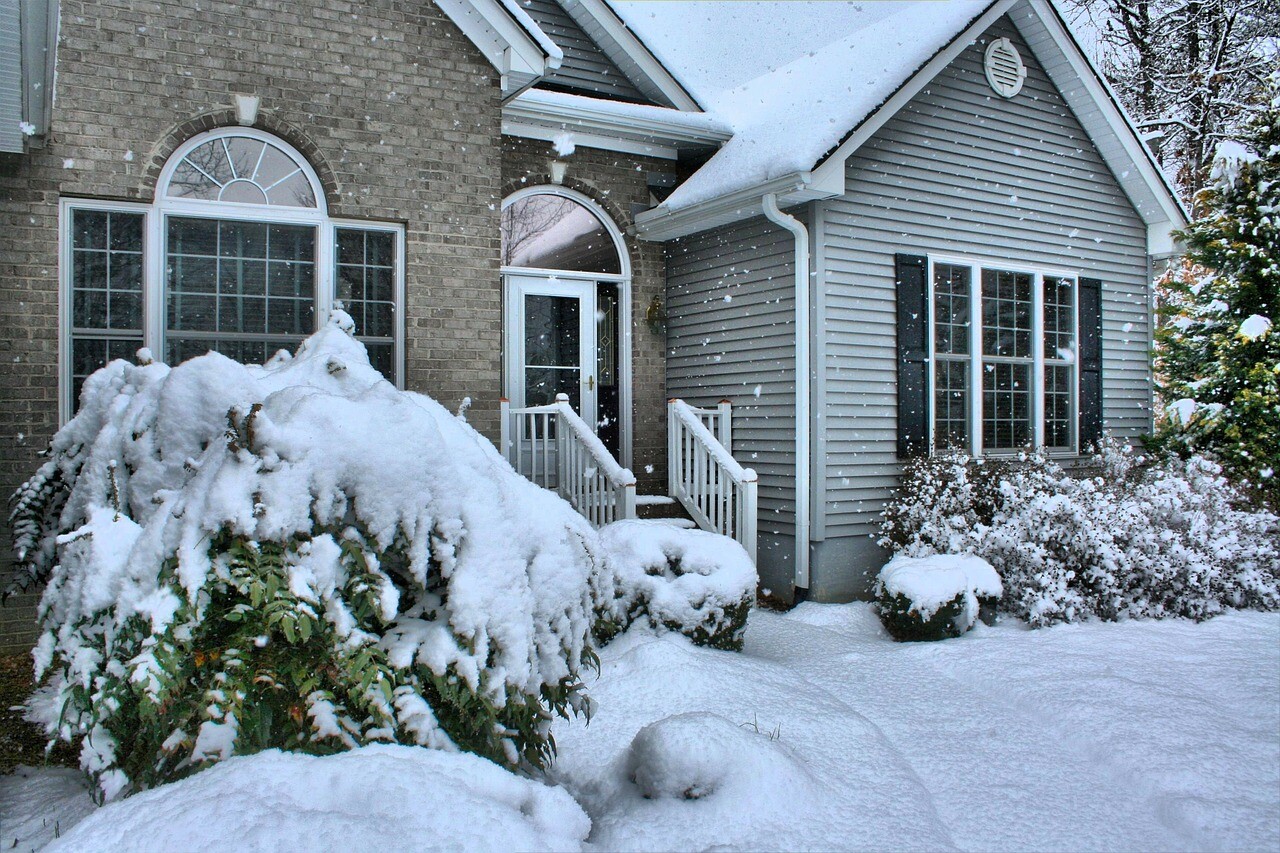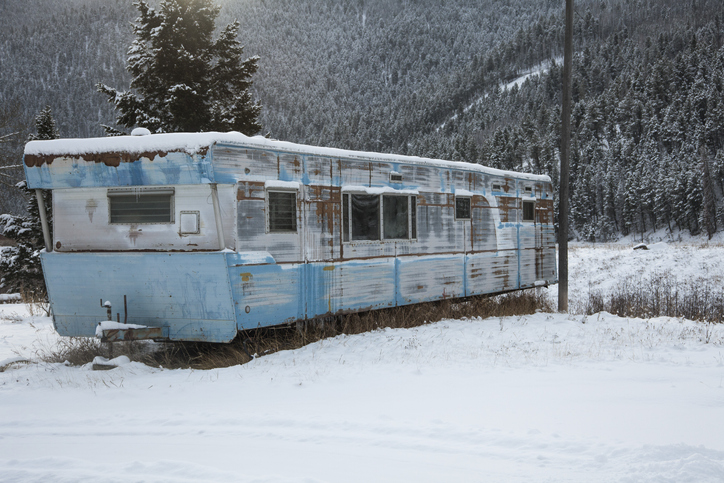
5 years ago · Justin Becker · Comments Off on How to Keep a Mobile Home Warm During Winter
How to Keep a Mobile Home Warm During Winter
When the temperature starts going down during winter, there is a lot you can do to keep yourself warm in a mobile home. This includes drinking hot chocolate or having a delicious soup.
With that said, there are also several things that you can do specifically to your mobile home to keep warm during winter.
Below are things you can implement on your mobile home to keep it warm during the cold season.
How to Keep a Mobile Home Warm During Winter
There are different ways to keep your home warm, even when the ground freezes solid. Below are some of the approaches that we recommend:
Improve Your Insulation
You can keep your mobile home warm by either increasing warm air or preventing existing heat loss. Preventing the loss of existing heat is possible through proper insulation. Proper insulation can save you up to 25% in heating costs.
All the heating systems and appliances function effectively and efficiently when your mobile home is insulated well. Additionally, you should seal leaks in windows, doors, floors, and walls while winterizing your manufactured home.
If your manufactured home is located in a snowy zone, you should consider having a cleverly designed roof. For instance, green roofs improve the thermal insulation of your mobile home effectively, which helps retain heat.
For your flooring needs, consider using either vinyl or cork. Both are good at retaining heat for extended periods. There is also an option of considering in-floor radiant heating.
Weatherproof the Windows
There is no argument that windows play a critical role in losing heat from your manufactured home. It will, therefore, help if you weatherstrip your windows during winter. Some of the popular weather-proofing options include window films, foam tape, and rubber.
Consider parking your home in a direction that faces the sun during the day. You should also install additional window panes.
Good quality triple or double glazing can also reduce losses by at least 50%. Apart from reducing heat loss, it can also be more energy-efficient.
Use Thermal Curtains for Windows
After you’re through selecting and installing your window treatments, proceed to make the correct use of blinds, draperies, shades, and shutters to prevent or reduce heat loss through your windows.
Even though an extra layer of blinds and curtains can help, thermal curtains have proven to be the most effective approach.
Thermal curtains are reputable for blocking heat from the inside. They can also improve interior decor and create privacy in your mobile home.
Use a Central Heating System
Even though electric heaters are perfect for warming up your mobile home, central heating systems and appliances present several benefits.
If your manufactured home has a central heating system, you should have realized that having a constant low temperature for the whole day is a waste of energy. With that said, having a timer could help with the automation of your central heating system.
A timer allows your heating system to work at the time you specify. This will ensure that your home is warm when you want it to be and trims down your energy bills. Most people like to set their timer to heat the home once in the evening and once in the morning.
For instance, a boiler, which makes up the main component of a central heating system, is known for heating water at a constant speed and rate. If you employ a programmable thermostat, you can enable it to turn on at specific periods, thus preventing you from wasting both energy and money.
Include a Fireplace for Class and Warmth
If you have a small mobile home, it will help to have at least two heating sources to cope with the cold winter months. In such a case, you can include a wood stove, a small heater, or a fireplace in your home.
Even though wood stoves are effective, you should be aware of a possible fire hazard.
Apart from warming your entire manufactured home, a wood burner or fireplace will also provide a classy appearance to your living space.
Use Draft Stoppers
Gaps between the door and floor are a major source of heat loss. It, therefore, becomes essential to block such potential gaps on the side or entrance doors of your manufactured home.
You can use several draft stoppers to block such openings. There are several draft stoppers you can select from on the market.
You can also employ a draft stopper to fill gaps on windows that experience similar openings and gaps.
That being said, you should use draft stoppers effectively. If you don’t understand how to apply them, call a professional to help you out.
Use Area Rugs
Apart from area rugs serving as effective heat insulators, they also increase the aesthetic appeal of your mobile home.
Area rugs help to keep your feet warm and don’t allow cold to pass through them.
There are several rug sizes, shapes, and designs that you can select from. During winter, we recommend that you get a wooly and fuzzy area rug.
Place the Radiator in a Strategic Spot
If you have a radiator in your manufactured home, it will help to have them in a manner that offers the most effective results. The best option is to place the radiator in the coldest part of your home.
You can also place your radiator under the window, in a traditional way. Remember to keep your radiator away from curtains and furniture.
Placing the radiator above the shelf can also prevent hot air from rising, thus better heat channeling.
You can even have a piece of plywood behind your radiator, but make sure it is wrapped in tin foil.
Inspect Your Furnace
Here, you should monitor the furnace closet closely, vacuum accumulated dirt, and inspect the blower motor. Check the dryer vent and the intake vent on the door, wall, or floor as well. Clear debris from your vent pipes and ensure that the roof exhaust vents don’t have any excess snow build up.
Since most manufactured home furnaces draw combustion air from under the home, you should keep four to six vents to enable free air passage.
Professionals recommend at least one square foot of vent for 120–square feet of the floor surface, and your furnace should have the right amount of blower intake.
Check Your Gutters
You must clean the gutters to prevent ice dams. Here, you can also ensure proper insulation of the attic floor and install gutter guards where possible.
The attic should be at least 10-degrees warmer than the outside temperature and be well-ventilated.
Protect Pipes
It would also help to protect against frozen pipes. This is possible by insulating all of the pipes that are susceptible to freezing.
Keep a stream of water flowing through a few faucets to prevent bursting and freezing.
Seal Cracks
You should fill openings and holes to prevent cold air from getting into your home.
As we have seen, you need to install weather stripping and heat tape around openings, such as interior & exterior doors, mail chutes, air conditioners, electrical outlets, and windows.
There are areas where you can apply a rubber sealed damper, and ensure that your home gets the right air supply required.
Stop the Slips
Here, you should keep the sidewalks and driveways clear of snow and ice. Repair any problems with handrails and steps.
Install an Emergency Release
You must install an emergency pressure release valve in the plumbing system. This protects against high pressure due to freezing pipes, and, therefore, prevents pipes from bursting.
It would help to understand how to shut off water and understand where your pipes are found.
Trim Trees
Inspect your home’s perimeter to see whether the branches have elongated towards the mobile home.
Ice and snow can weigh the branches down and force them to fall on your manufactured home. Trim branches to prevent such a situation from ever happening.
Checking the Roof
An important part of keeping your home warm is checking the integrity of the shingle or metal roof.
The roof presents the first line of defense of protecting the home’s interior from the outside. Your roof will be in trouble if it experiences the stress of ice or snow buildup, needs replacement or repair, or experiences the effects of winter storms.
Check the below areas for any trouble on your roof:
- Missing Shingles: If there are broken or missing shingles, the integrity of your roof is at stake. You should inspect regularly and repair as soon as damage is noticed. Ensure that you also repair missing or damaged fasteners.
- Mildew or Mold: If you notice that mildew or mold is growing on your roof, it might be enough of a sign that water isn’t draining properly. During winter, the buildup of water can damage and freeze your shingles. This is the time to inspect your roof and ensure that there are no underlying problems.
- Water Leaks: Check for water leaks in the attic, as well as have a clear look at the ceiling and walls of your home. Any small leak could become dangerous, especially during winter.
- Shingle Grit: Your shingles are getting to the end of their service if the coatings on the asphalt shingles are coming off and accumulating in your homes’ gutter. This may be the perfect time to purchase a new roof in preparation for winter.
Why Winterize Your Home
As we have seen above, keeping your home warm during the cold season isn’t as easy as you may think. However, it’s necessary, especially if you want to keep your family warm and healthy.

Proper winter preparation will protect you from harsh cold temperatures, sleet, snow, and rain.
Below are reasons why you need to winterize your home:
Saves Energy
A large part of keeping your home warm during the cold season involves insulating the home against any cold. By simply protecting and sealing your home, you’ll end up using less energy in the heating process.
It’ll, therefore, translate into a large saving on the utility bills.
Prevent Unnecessary Repairs
Regular maintenance is among the best ways of safeguarding your mobile home against unexpected problems.
Before winter kicks in, having a professional examine your HVAC system should ensure the furnace will run throughout the season.
Get a professional to inspect almost everything in your manufactured home that you might not have used during summer, including a fireplace and chimney. There could be hidden challenges that may translate into major problems later.
Secure Your Mobile Home
If you keep your manufactured home warm during winter, it’ll be protected against potential damage resulting from snow, ice, and freezing temperatures.
You should winterize the exterior of your manufactured home since it’s exposed to harsh weather elements.
Preparing your home can help you eliminate or minimize damages that your mobile home could experience during the harsh cold season. This protects your home, prevents high energy bills, and costly repairs.
Conclusion
As we have seen, winter can be unbearable, especially with the cold weather.
Before winter kicks in, you should implement the tips we have recommended above for you and your family to stay warm. For instance, you can always leave your ceiling fans off.
Preparing your home during winter will save money, prevent unnecessary repairs, and secure your manufactured home. You can always call a professional to help you prepare your home during winter.







